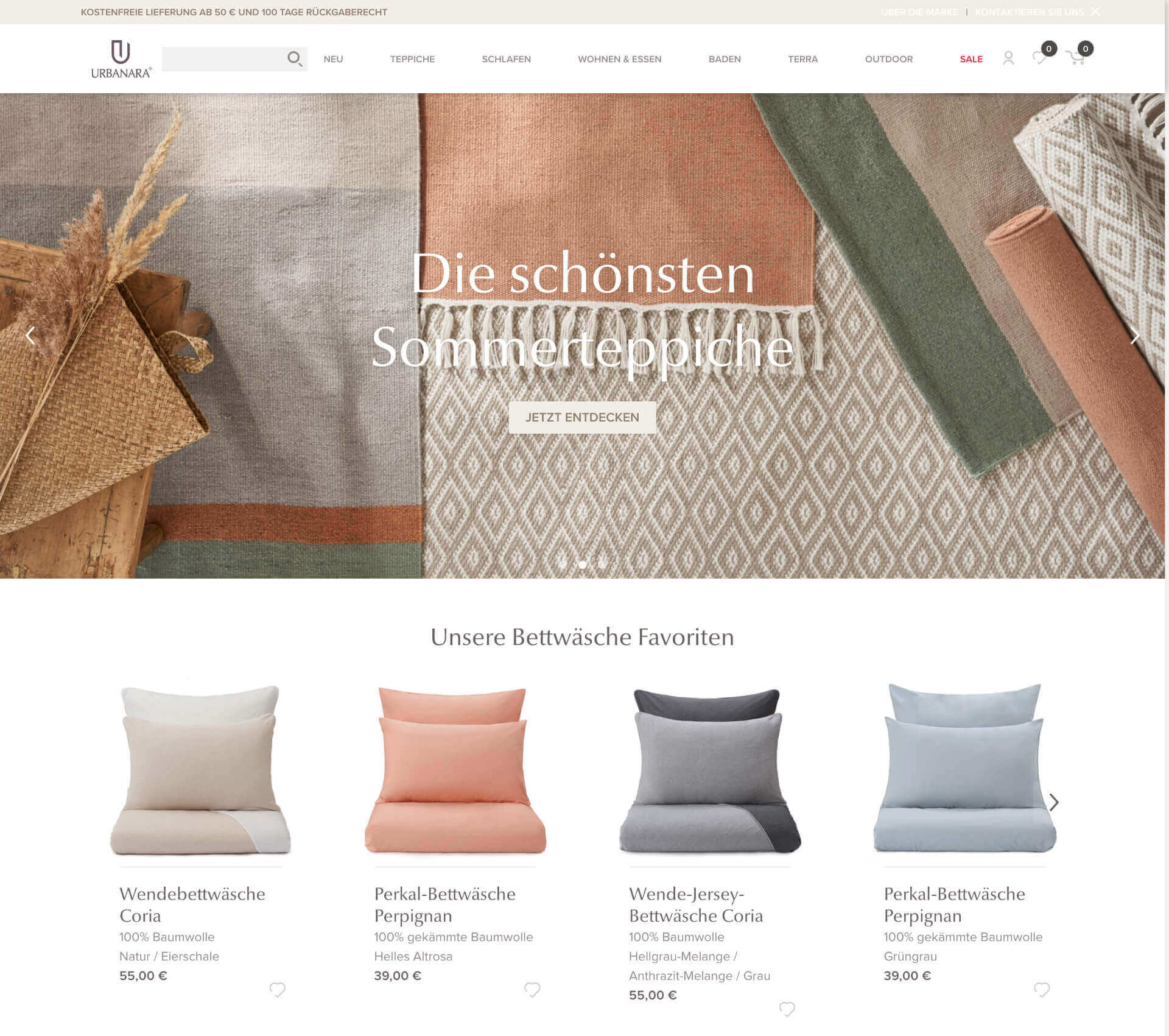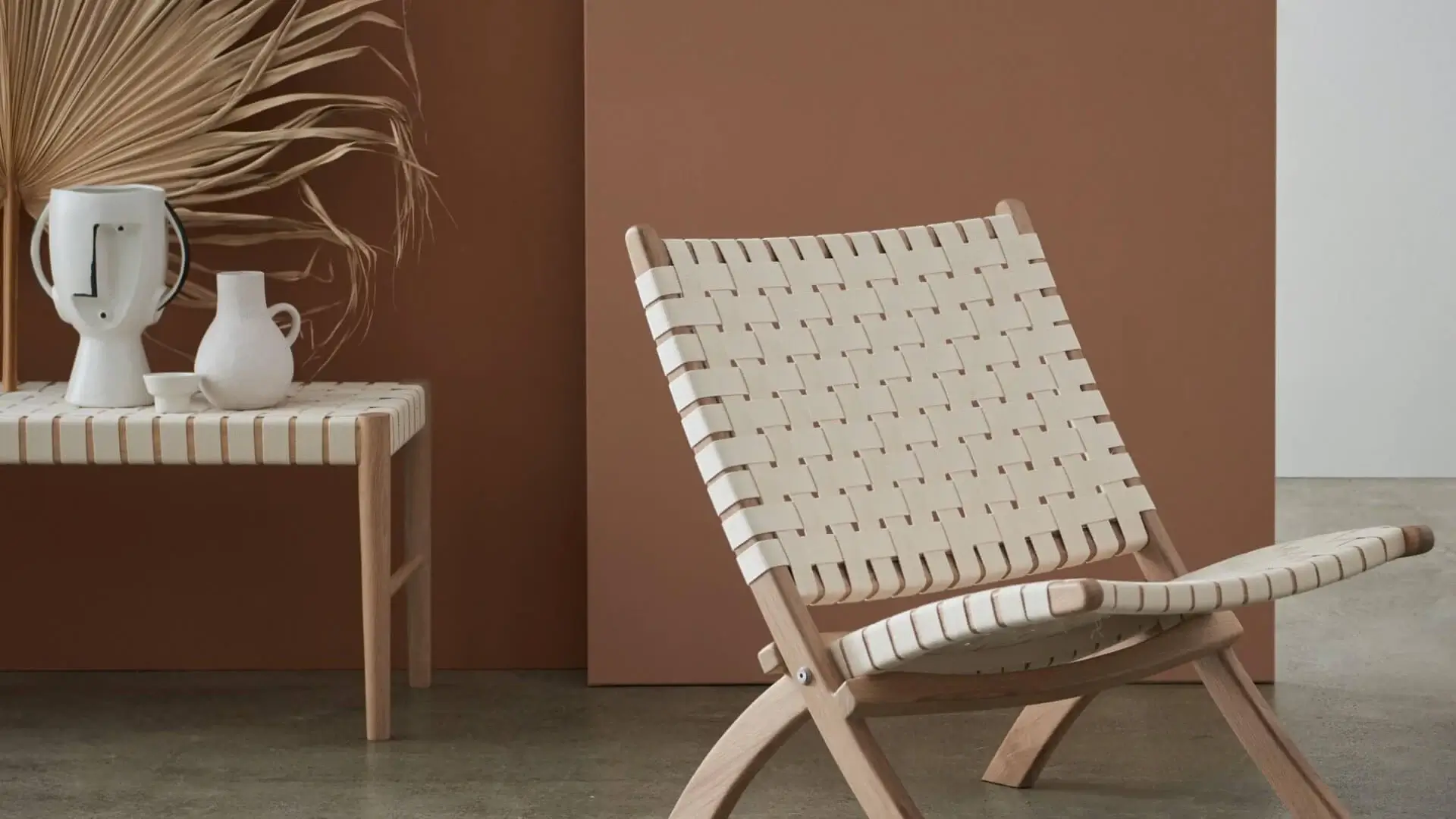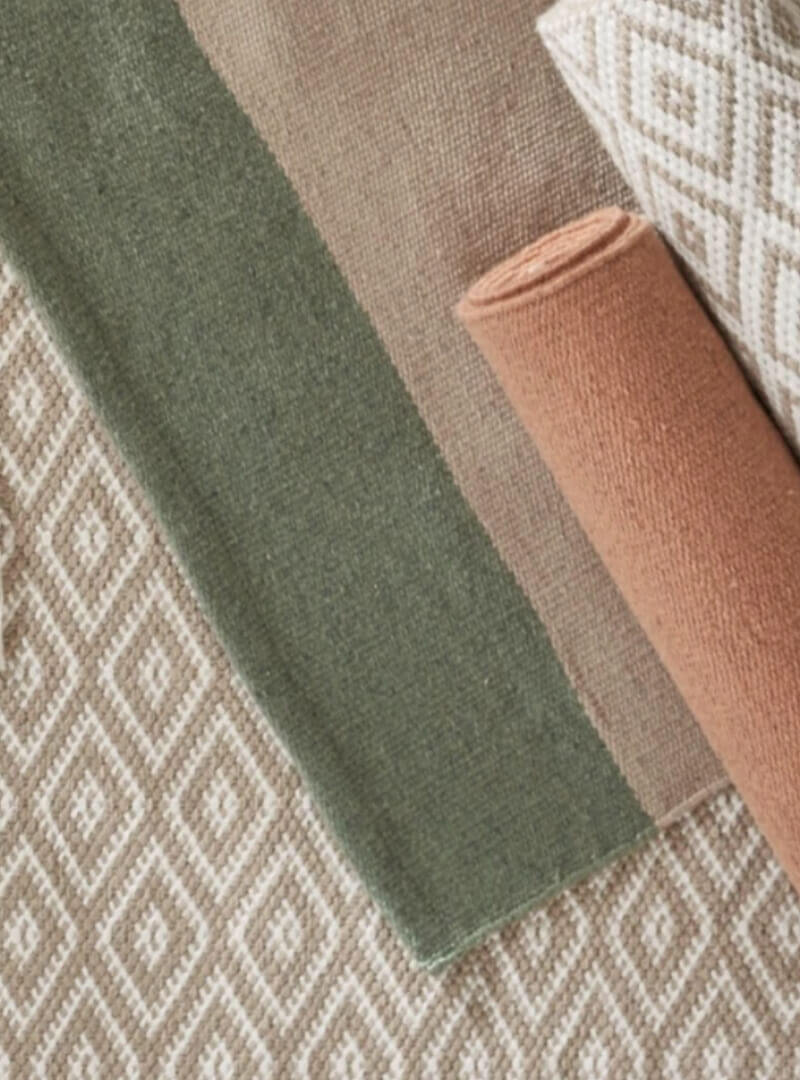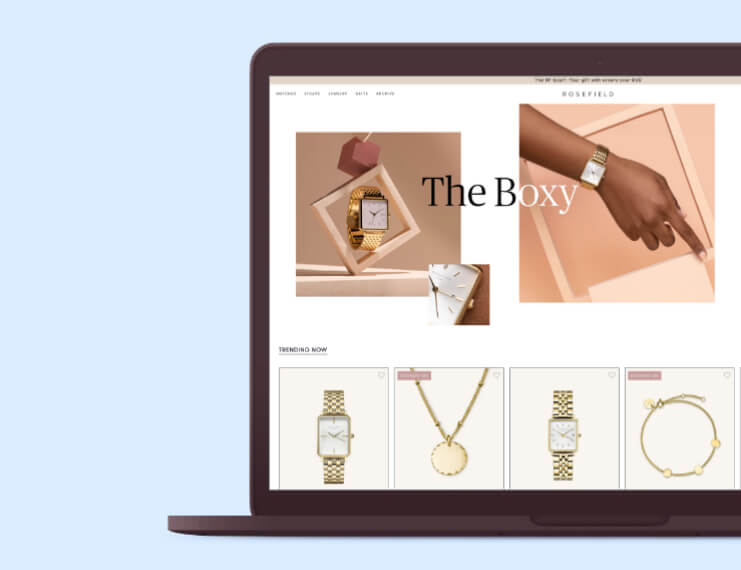Finding a better solution
When it became obvious that the deadline for a spring 2018 launch would be hard to meet, URBANARA decided to let go of the idea to build their own shop platform altogether. Instead, all focus was put on setting up a turnkey shop system that would set them up for international growth and efficiency.
As Robert explains: “It was time for us to acknowledge that the process design might not be the leanest and simplest if we did it ourselves. Hence, we went looking for a standard eCommerce solution that would cover 80% of our requirements straight out of the box, with enough apps to take care of another 15%. That would leave us with a 95% match, which was good enough for now.”
Choosing Shopify Plus & Code
After reviewing a number of out-of-the-box shop platforms, the company decided to go for Shopify.
In this decision, time to market was the most important factor. Having faced delays with the launch of their new shop platform, URBANARA knew it was crucial to have the platform ready and live in time for the Christmas season, and with a compelling user experience across all devices.
The timeline was tight: URBANARA wanted to launch in 8 to 12 weeks, at most. The speed at which Shopify can be set up and customised, as well as the extensive appstore for additional functionality came out top of the list in their search for the right shop platform.
The next step was to find a European Shopify Plus partner with strong backend coding skills and the ability to deliver the high-quality visual design prepared by URBANARA. The visuals in particular dictated that outcome. Robert: “With everything we do we ask ourselves: does this fit our brand? Does it help us get our brand values across to the user? The brand is our core value, our Unique Selling Point. What it looks like and how it is portrayed on our own website is crucial for our growth.”
URBANARA made a conscious choice to go with an external agency specialised in setting up eCommerce sites on Shopify. “Out of all the agencies we contacted, CODE looked the most promising. From reference projects we saw that they knew what they were doing; it had a logic that we could see ourselves needing in the process. They seem to prefer a lean approach, where they don’t change anything unnecessary. And if they do, they come up with something good. We believed in them. So we decided to put the development of our new Shopify platform into their hands.”

Challenge accepted
For Code the project was a favourite. We love a good challenge, and it gave us plenty of that! Together with URBANARA, we reviewed all their existing tools (order management, inventory, purchase orders and such), selected standard Shopify apps to replace them with, and built a few custom apps to integrate all their business processes with Shopify. Here and there we kept bits of the old legacy system, when it saved a lot of time. We also wrote about the 15 Shopify apps that we fully support.
At the moment our frontenders are working on the UK webshop, which is expected to launch in the second week of October, while our backenders are fine-tuning the connector with Ingram Micro, URBANARA’s fulfilment partner. They already made sure the webshop can handle split orders and separate shipping: bulky items are often shipped by different carriers and have different delivery times than small textile items, so if they are combined in a single order the system now sees to it that this is processed correctly.
And all this by videocall! We never actually met the URBANARA people, just talked to them via screens every day. The wonders of the digital age :)
New momentum
URBANARA seems to be pretty happy with us, too! We delivered as promised, even against challenging timelines. Robert: “Early July we launched www.urbanara.at, our new Austrian webshop, as a test-case before relaunching our ‘flagship’ in Germany. That was about 4 or 5 weeks later, and only a few days ago Switzerland went live!”
He is really pleased with some Shopify functions as well. “Their tagging system is a godsent. We can now build dynamic collections with a few clicks, it’s all automated. And we used to do this manually, can you believe it…” And this is not the only timesaver. Before Shopify, URBANARA had to stay in touch with many different payment providers for instance. Now this is automated, fast and easy. “It took two minutes to activate Amazon Pay and PayPal! And the rest is taken care of by Mollie.”
The same goes for the Inventory Planner tool, which not only saves a lot of time but also enables demand forecasting. And for the Ingram Micro connector, which enables Customer Service to tell the customer exactly where their order is in the process. Meanwhile, the IT department has shrunk from 6 full-timers to a single product manager.
Last but certainly not least: the site is now fully responsive. Since 50% of URBANARA’s traffic is mobile, conversion is soaring. Robert: “Up to 4 times higher already, depending on the source of the traffic. Take Social Media Marketing, as an example: we did use Facebook, Pinterest and Instagram before, but it never worked as well as it does now. We can clearly see how the new site helps us deliver a much better mobile experience to our users, and turn them into happy customers!”
He adds: “The whole thing is simply amazing. Everybody was sceptical at first, but now you can see how the successful replatforming has given everyone in the company a real lift. Morale is soaring! We can finally shut down the old infrastructure, gain speed again, try out new ideas, and grow.”
Is your business suffering from software lock-in, too? CODE would be thrilled to give you back your momentum with Shopify. Don't hesitate to give us a call, or email us your requirements!







